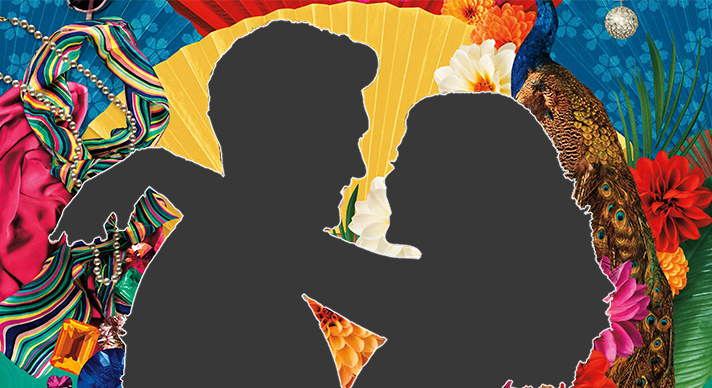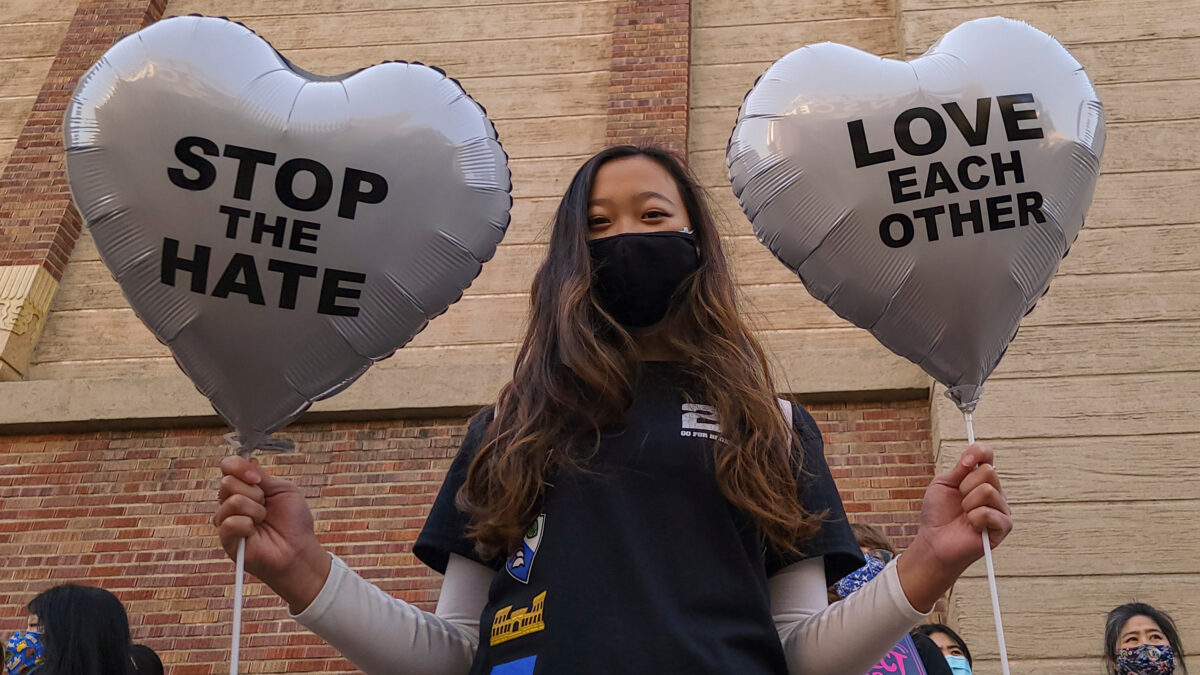By Guest Contributor: Akshita Gupta
Asia is the world’s largest continent. It occupies 30% of the world’s area and encompasses a booming 4.4 billion population. With a continent so huge, it’s needless to say that diversity lies everywhere, in every part of Asia. Yet, in a common man’s mindset, Asia is limited only to East Asia, although the continent is divided into six distinct parts: North, South, East, West, South-east and Central. Asians from anywhere other than the East are dubbed “not Asians”, “not real Asians” and “not Asian enough” and are unconsciously fed into a trap of a compressed checklist of physical features as to what an Asian looks like, or should look like according to outsiders.
Aside from being absolutely incorrect, this common and unofficial terminology has become something people have unknowingly accepted. It has seeped into our thinking system, and has led to the offensive disregard of us non-East Asians as not being Asian. Such a treatment contributes to our feeling of alienation and being left out of place.
Not including non-East Asians in the term Asians excludes and wrongfully eradicates our identity. Growing up, I was taught that as India lies in Asia, and since I was Indian, I was Asian. I was Indian, but I was Asian too. I was sure of it.
As I got older, I started to identify more with the term “brown”. At the time, brown in terms of colour meant being neither fair enough nor dark enough– although it has less to do with colour than with the place where one is from. I thought the term was perfect.
Increasingly, however, I became uncomfortable with the term “brown”. Sure, I was Indian, and I was Asian; and I was no doubt a brown girl. But the tag felt more like a consolation prize than an identity. It was already too late when I realised that both Non-Asians as well as Asians didn’t consider ‘Brown Asians’ to be really or fully Asian.
I’m completely okay with being called Indian, but even till now the term has wrong preconceived notions to it. People from the West have always linked India with poverty and underdevelopment; whereas India is a highly modern developing country. It’s surprising when people in US ask me if “there’s TV in India” when practically every modern day used technology is used on a daily basis by all middle class Indians. When my friend’s sister went abroad, people would flat out believe her when she jokingly said that she used to go to school on an elephant and live in a jungle. It was funny at first, but soon it became upsetting. I didn’t want people to think of Indians this way, and I didn’t want them to keep denying my existence as an Asian. The exclusion of Brown Asians has been reinforced time and again through pop culture, media and daily interactions. We’re all complicit in this exclusionary mindset: you, me, and all of us. The recent movie, Crazy Rich Asians, which featured an all-Asian cast, has been praised for its representation of Asian people; yet Brown people in the film were minimized as maids, gardeners, and guards. I felt ashamed by this portrayal of Brown people as befitting only subservient roles to rich East Asians. Sangeeta Thanapal, a Singapore-Indian writer and activist, remarked: “The dominance of East Asia in the worldwide imagination of who constitutes the idea of Asia is troubling, especially since brown Asians make up a sizable portion of the continent.”
* * *
Many non-Asians share a common stereotype of Asians: Asians have small eyes, monolids, a fair face, short hair, and they’re all-similar looking. I don’t fit into these simple tags, and it makes the world see me as less Asian, if not Asian at all. As an Indian I know I am brown, but who are Brown people? Does it literally mean people with brown skin? If so, Americans with a darker skin tone would be “Brown”, while white-appearing Indians would be “White”.
But, it doesn’t work like that.
* * *
The Office of Management and Budget established federal guidelines for defining “Asians” as “a person having origins in any of the original peoples of the Far East, Southeast Asia, or the Indian subcontinent including, for example, Cambodia, China, India, Japan, Korea, Malaysia, Pakistan, the Philippine Islands, Thailand, and Vietnam”. In other words, a person being born in Asia and/or having Asian parents makes him Asian, regardless of how much they resemble the stereotype of what an ‘Asian’ looks like. Why is it, then, that non-Asians still dismiss me as not Asian or not a “real Asian” when I fulfill those requirements? Non-Asians who disregard brown or dark-skinned people as ‘not Asian’ or not ‘like an Asian’ because they don’t look East Asian often also equate Chinese, Korean and Japanese people because of similar features — as if to confuse ethnicity and appearance. Meanwhile, South Asians and Russians are not considered Asian because of the difference in their physical features from East Asians.
The diversity of people who fall under the pan-ethnic Asian American identifier means that many of us might share a political history even while we might lack physical or cultural similarities. Some wonder whether that history, alone, is enough to maintain our political ties; especially when it comes naturally for many of us to struggle to find commonality with other Asians who look different than ourselves, who speak different languages, and who celebrate different cultural practices. We might all be Asian, but sometimes it doesn’t feel that way.
Lucy, a Filipina student at Iowa State University said, “Growing up, I never knew which box to check when identifying myself. I came to strongly identify myself as Pacific Islander until the definitions changed to becoming more explicit and limited. Filipinos were excluded from Pacific Islanders and were added to Asians. I accepted and allowed that to become a salient part of who I am and joined the Asian club in my school. There was a disconnect between me and the rest of my Asian peers. They viewed me as “less Asian” because I didn’t use chopsticks, something Filipinos can’t do because of colonisation. It made me question if I had a place I’m Asian spaces.”
Even East Asians can face pressure about not being “Asian enough” or not fitting into their culture. Sam, who is a biracial Korean American, said that since she is White-passing, she has always been the target of prejudiced comments. “Since I was little, people would say, ‘oh, I never really thought of you as Asian’; or, ‘but, you look so White!” Even around relatives I’ve never felt Korean enough or Asian enough. I don’t have the habits or ideals my grandparents passed on to my mother. I stick out like a sore thumb in their eyes because of that.”
Sophie Celiene from Pennsylvania, who is a mixed race Filipina, Chinese American with Dutch and Irish ancestry, agrees about the complexity of mixed race identity. “I feel compelled to spell out the entirety of my race so that I’m not accused of lying. I’ve been told so many times I’m not a Filipina,” she says.
Meanwhile, someone on Instagram once told Ansuya, a girl of Indo-Guyanese descent, that she wasn’t Asian because she was too mixed. “She said I would never experience the true struggles of being an Asian and I was trying to steal her identity,” says Ansuya.
* * *
Asians are too often told who we are, who we’re not, who we should be and where we are from. This often comes from people who have no authority on this subject.
Hufrish, who is Indian Canadian, told me how her classmates in Canada would refuse to believe she was from Asia. One time she had an assignment in which she had to make a PowerPoint presentation about the continent she was from; none of her friends thought it was ‘correct’ of her to make it on Asia.
Hillary M, a Filipino teenager said, “When I used to introduce myself to people, they would tell me I was a Pacific Islander, or not Asian because I didn’t look like it.” Apparently, because Hillary didn’t have ‘light skin and straight hair’ or wasn’t rich ‘like an Asian’, she had no claim over the Asian identity.
Hillary rejects this thinking: “I know I look different, but a person cannot define my racial history or association solely based on my physical features. I am a proud Filipino. It’s an identity I have struggled to accept because so many people have told me otherwise.”
Another Filipina, Natalie Carpizo, who moved to the US when she was four, says: “I remember the very first time when I didn’t feel Asian enough. I was seven, and I told a kid in summer camp that I was Asian. He replied, ‘You’re not Asian, your eyes don’t go like this,’ and he proceeded to stretch his eyes out. I started crying because I didn’t know how else to show him my racial background was valid.”
Asia is different for everyone; it always has been. Asian can mean a shared political project; an array of cultural heritages; a grouping of different nationalities; and more. For each of us, the word “Asia” holds an individual significance. What remains true for me is that there is no single, defining Asian identity or experience. Non-Asians group certain Asians together based on shared physical features, and in so doing, assert that their definition of what is — and what isn’t — Asian carries more weight than our own. I reject that thinking. My identity as a Brown Asian girl is as valid as that of any East Asian.
No person’s ignorance changes who you fundamentally are. Instead, what really matters is rejecting the stereotypes you grew up with; and working to at least know yourself for yourself and no one else.
Akshita Gupta is a freelance writer.
Learn more about Reappropriate’s guest contributor program and submit your own writing here.



